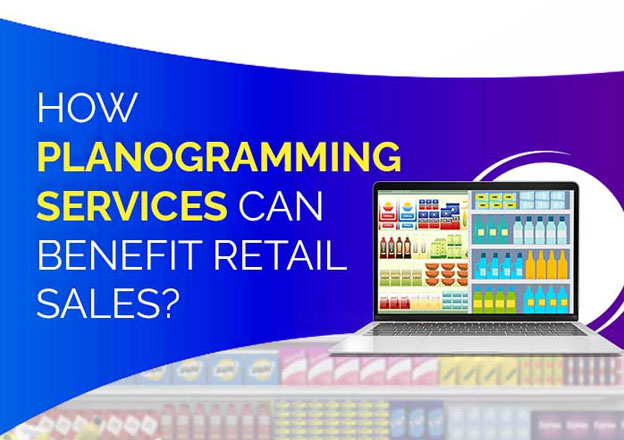How do retail stores benefit from planogram automation?

Even in the age of digital, most consumer decisions are made in the retail space. Though eCommerce is soaring in popularity, retail’s reliability is still a formidable force that taps into the consumers’ purchasing power. On top of that, retail is undergoing a significant tech revolution to keep up with the fast-paced eCommerce sector. Embracing the digital platforms by retail stores will drastically change the store experience for consumers, employees, and owners/investors.
And planogram analysis has set the foundation for retail stores to transform into digital powerhouses, popularly known as “Smart” stores. Planogram compliance is instead a scientific approach to consumer experience in retail stores. Since the approach is scientific, stores can ideate, experiment, innovate, and stand out relatively easier.
For peeps who are just hearing this term, planograms are nothing but a visual representation of the shelves and products in the store, and planogram analysis is the process in which these planograms are analyzed and tweaked to drive sales and experience.
So, creating planograms for small retail stores is relatively easier. However, it becomes exponentially difficult to create these planograms when it comes to large-scale retail stores with multiple branches. Also, we have to remember that creating planograms is not just a one-time thing. Stores have to optimize the planograms based on the consumer interactions for them to fetch the ROI. Enter automation.
What is planogram automation?
To understand planogram automation, we have to understand what’s automation first. Automation, as the word implies, is the process of making a process or application, or system work automatically. Technology is the heart of automation, and it can help reduce costs and time and increase a business’s accuracy, productivity, and reliability.
Planogram automation is the process of leveraging tech to create and deploy planograms across the stores with minimum human input. With digital platforms, stores can set boundaries for the system to work with and feed it data to come up with efficient, data-influenced planograms.
Technologies like AI & ML further make the process easier and more accurate. AI systems get better with every interaction and sort of evolve to meet the consumer’s needs. Large stores, in particular, need to maintain a holistic brand experience while delivering region or consumer-specific experiences across their outlets. In such scenarios, planogram automation is extremely helpful.
Benefits of planogram automation
Easier and massive distribution of the planograms
Planogram automation operates with increased accuracy as it has almost zero dependencies on human efforts. With digital channels, it can also share these plans across a thousand stores instantly.
Imagine a brand like Nike with 1000+ retail stores across the globe. It needs to deliver the same, consistent brand experience for a customer in Dubai and another from New york. It is impractical and resource-draining for Nike to manually devise these experiences. Instead, with technologies like planogram automation, Nike has to solve the problem just once. The system will automatically implement them in multiple contexts. They can optimize the planograms, upgrade them, and deploy the tweaks instantly.
Plus, they can create geography-specific planograms with automation systems effortlessly. Geography has always been a major factor for retail stores, and planogram automation can solve this customer experience problem.
Better inventory management
Inventory management is almost always messy, and the brands that get them right are the most successful in retail. And planogram automation can bring order to this chaotic inventory management system. Predicting consumer behaviour is difficult. Even with higher-end technologies, it is impossible for brands to completely predict their actions, but that doesn’t mean they can’t prepare for doomsday.
In recent times, the demand for particular products spiked, leaving the retail stores stunned as they couldn’t fill this gap with their consumers. And this spike is usually short-lived, meaning the trick is to quench the demand only when it presents itself. Automation can help store owners to manoeuvre through such tight corners relatively easier.
When planograms are automated, the systems record the consumer interaction and store this data in a central base. This data can be analyzed to make important product flow decisions that can prepare a store during a crisis and capitalize on opportunities when they present.
Easy in-store experience
The goal of planograms is to help retail stores drive sales by optimizing space and customer journey. However, they can also significantly streamline their internal operations with planogram automation.
As you can see from above that planogram automation simply nails inventory management, it also eases the overall employee experience. Human resources in retail stores is a critical part of delivering a unified brand experience. And brands spend a huge amount of resources on their training and development. These resources can be streamlined, and the process itself can be simplified. Automation also takes a huge load off the store employees and helps them concentrate on critical business operations rather than focusing on repetitive and menial tasks.
Accelerated business processes
The tech market is dominated by intelligent systems built on Artificial Intelligence and Machine Learning, making the system more efficient and accurate. Retail has always been a space that’s more dependent on human efforts, so intelligent automation systems can drastically accelerate the process while reducing the risks involved.
Putting data at its core, planogram automation treats data as boundaries, and every time they bypass the boundary, they learn a new thing! With interactions, the system grows, and eventually, it outgrows the processes that were once deemed complex. Imagine maintaining the global inventory for a huge retail chain with such intelligent automated systems. They can easily bridge the gap between the shelf and the local inventory and can communicate with global inventory systems to keep the engine running!
Wrapping this up
There are many custom software development companies in the market to help you with your retail operations and planogram automation. With increased digital accessibility, retail brands can easily craft the ultimate customer experience, and planograms will play a huge role in the upcoming evolution of retail stores to smart stores. By combining technologies like automation, Artificial Intelligence, Machine Learning, Predictive Analytics, etc., brands can be more consumer-centric, helping them create a stronger presence in the marketplace! So, retail brands should look for opportunities to stay with the digital disruption trends and create better odds for their organizations!
Author Bio
Madhu Kesavan is the founder & CEO of W2S Solutions, a major big data analytics consulting company that empowers governments and enterprises on their digital journeys. With 20+ years in the IT market, he makes his vision for a sustainable future come true by leveraging technology.
Write For Us
Gain multichannel inventory visibility and control with eChannelHub
Learn more about eChannelHub with a free demo, tailored for your unique retail business.
Request A DemoRequest a Demo
Gain multichannel inventory visibility and control with eChannelHub
Learn more about eChannelHub with a free demo, tailored for your unique online business




